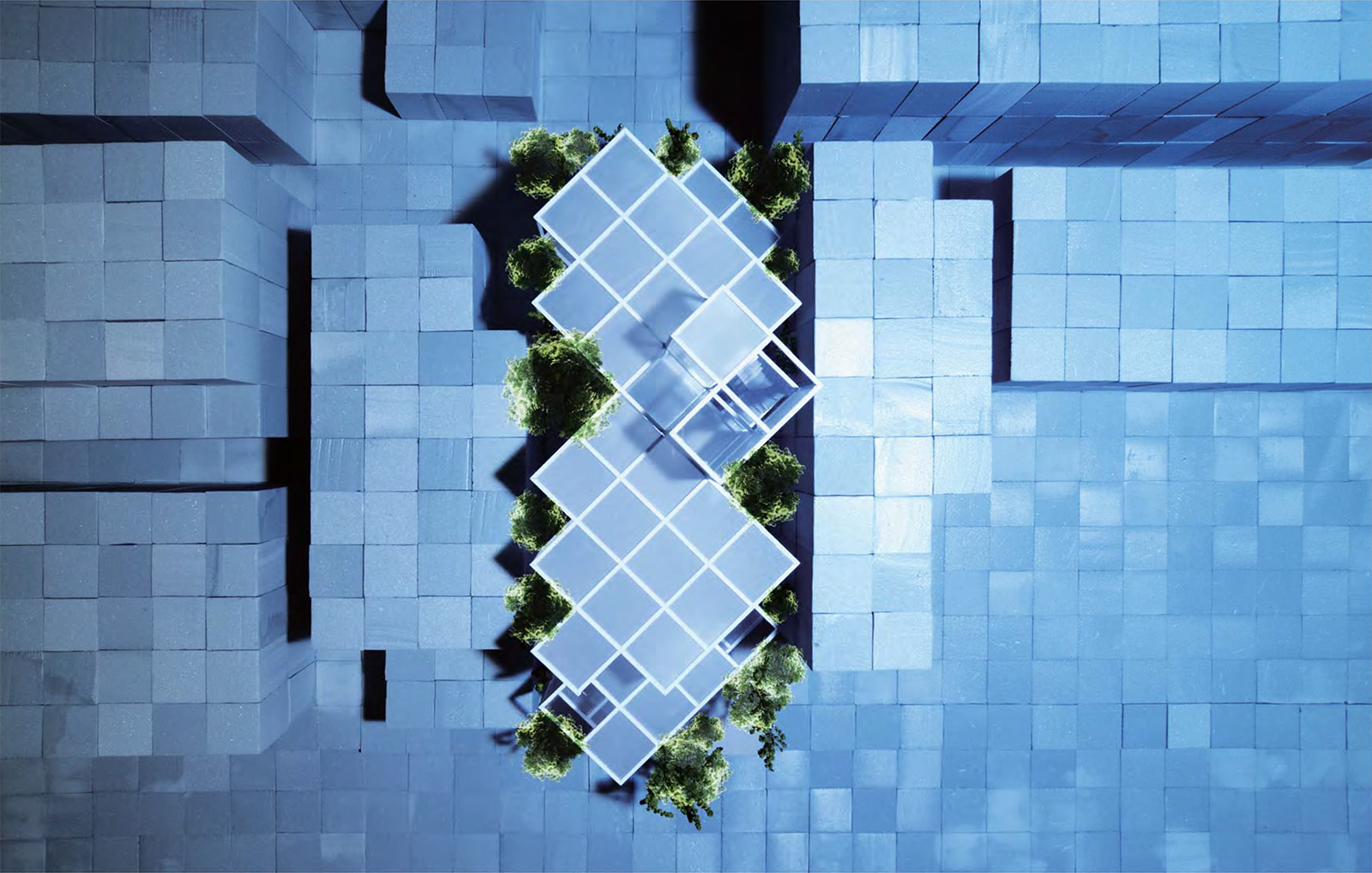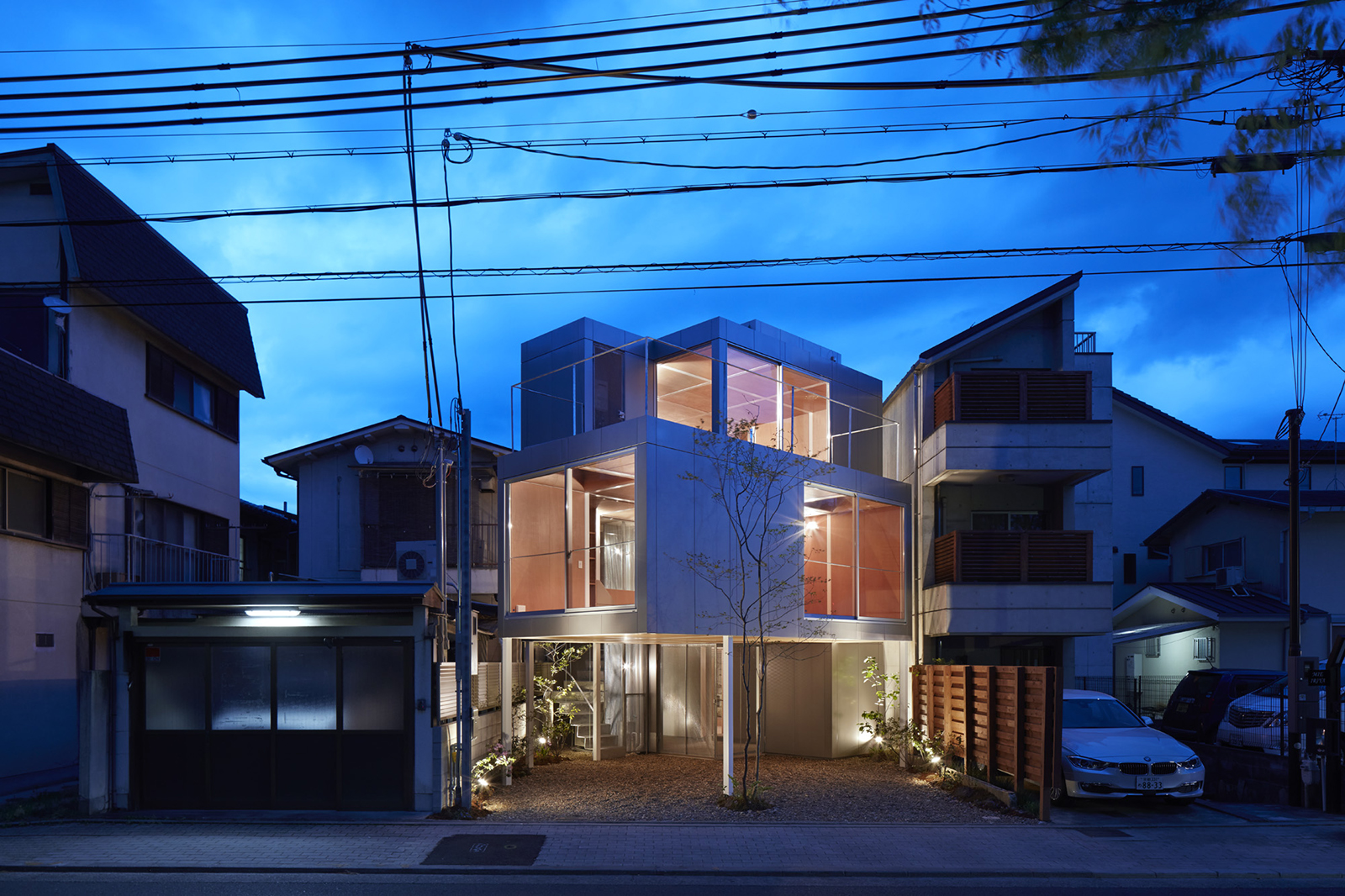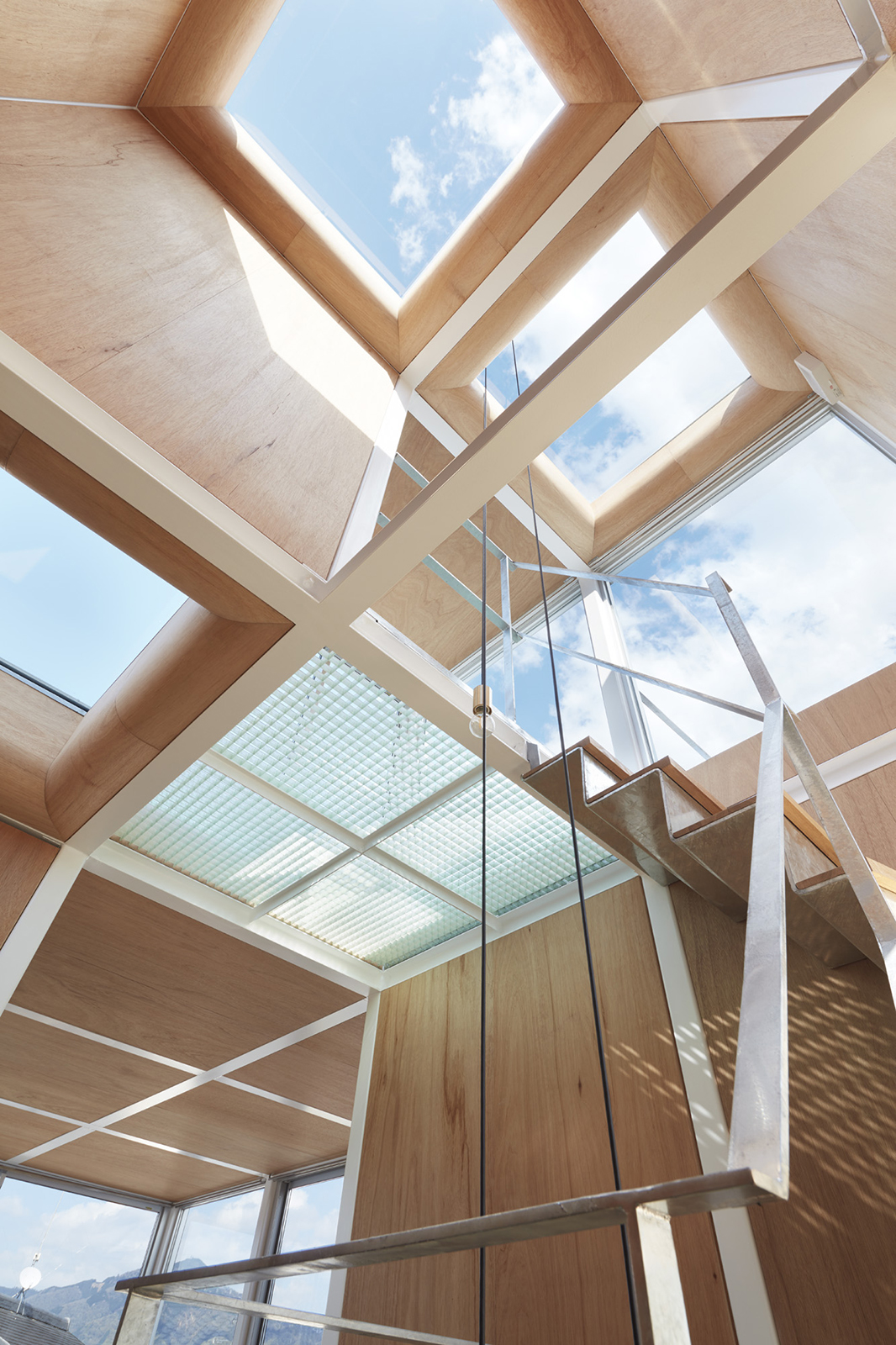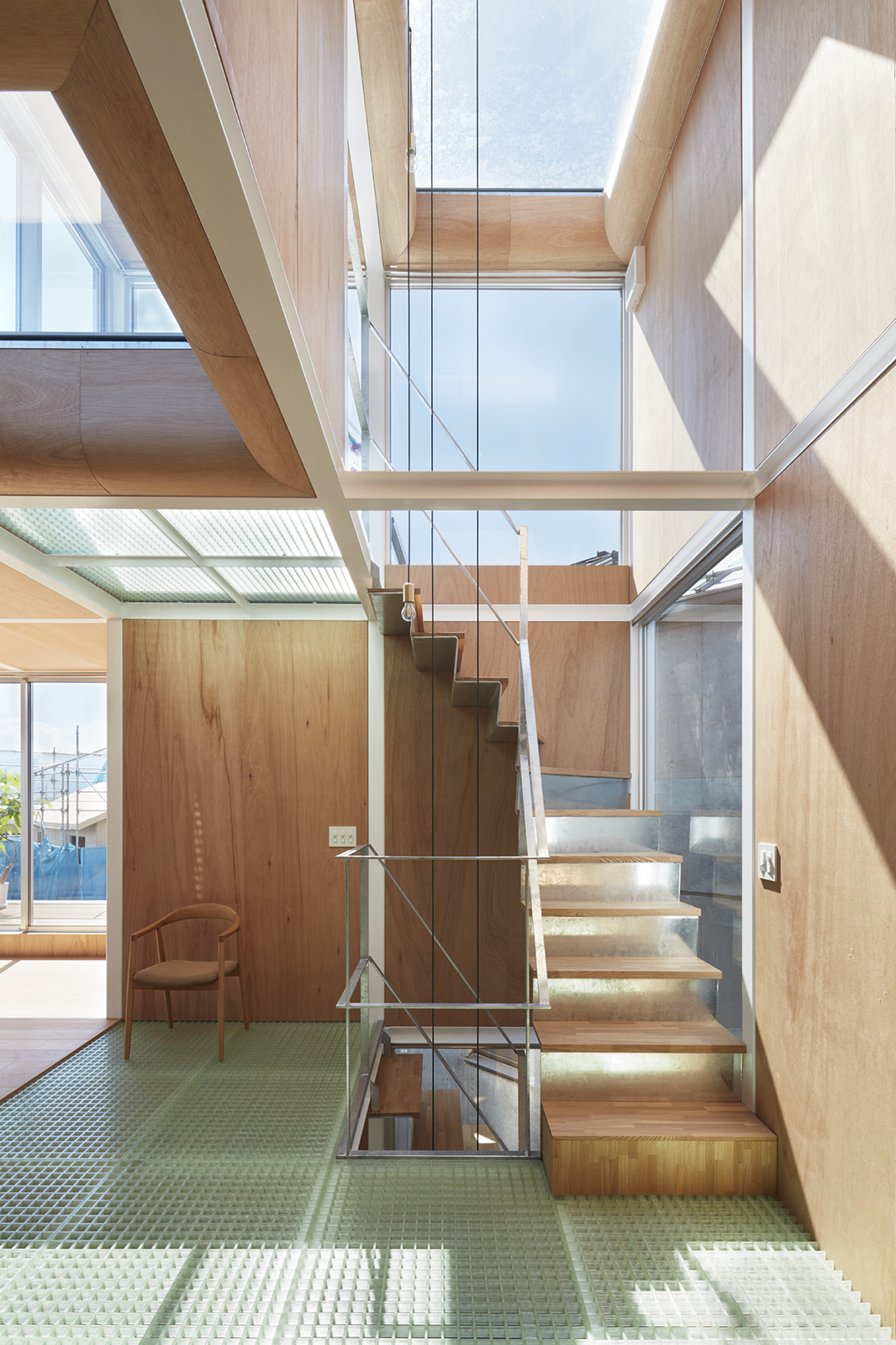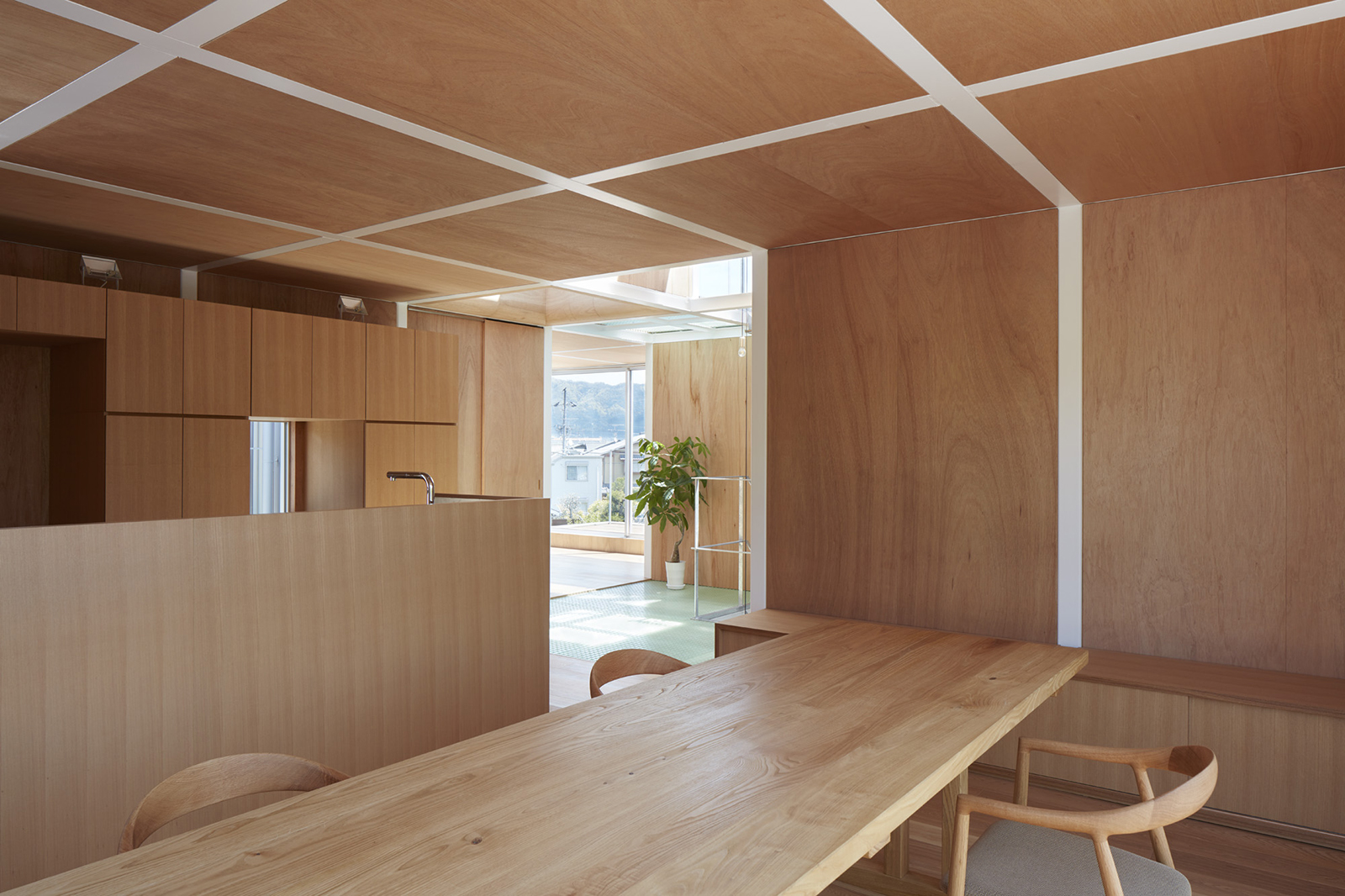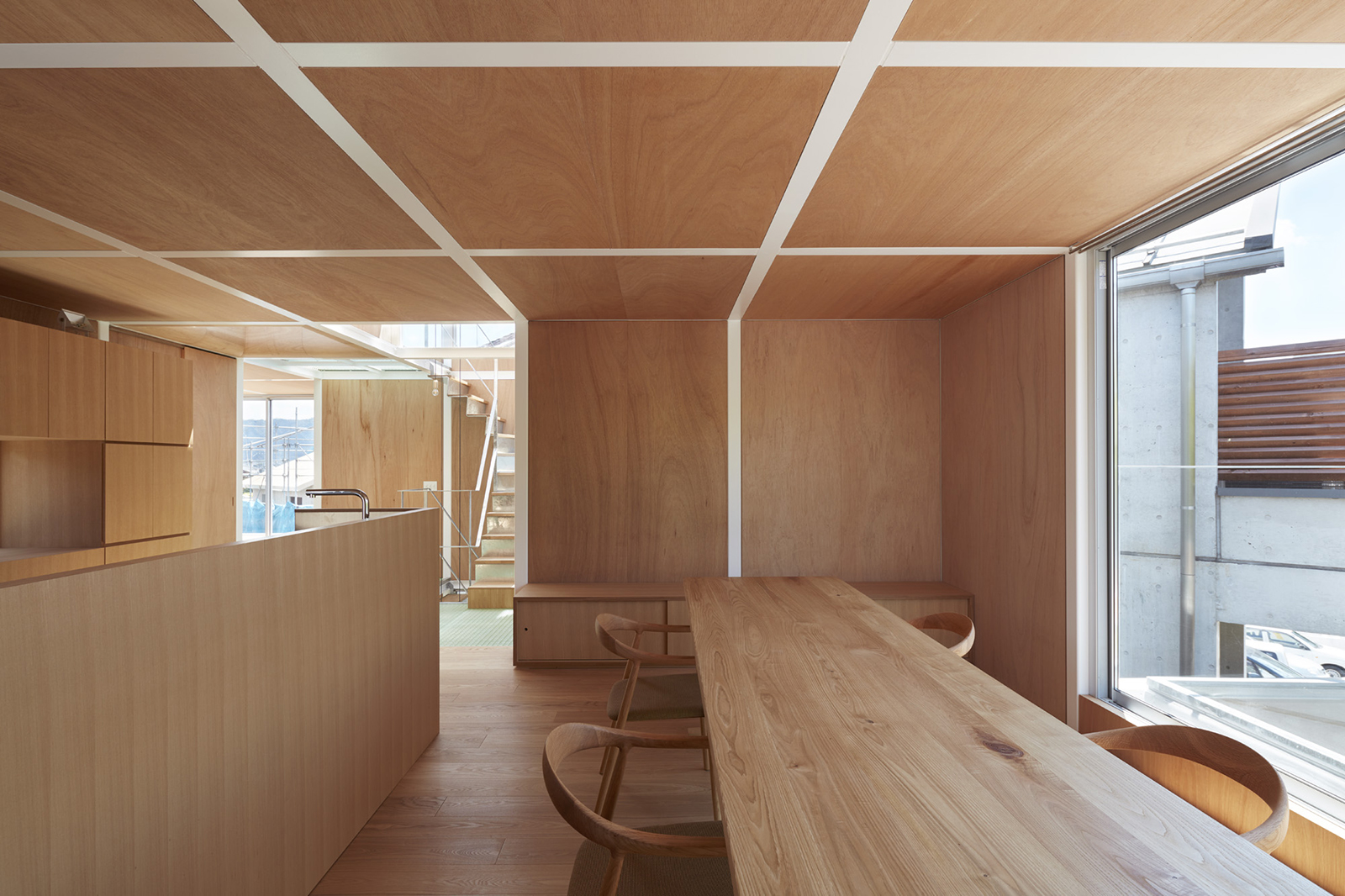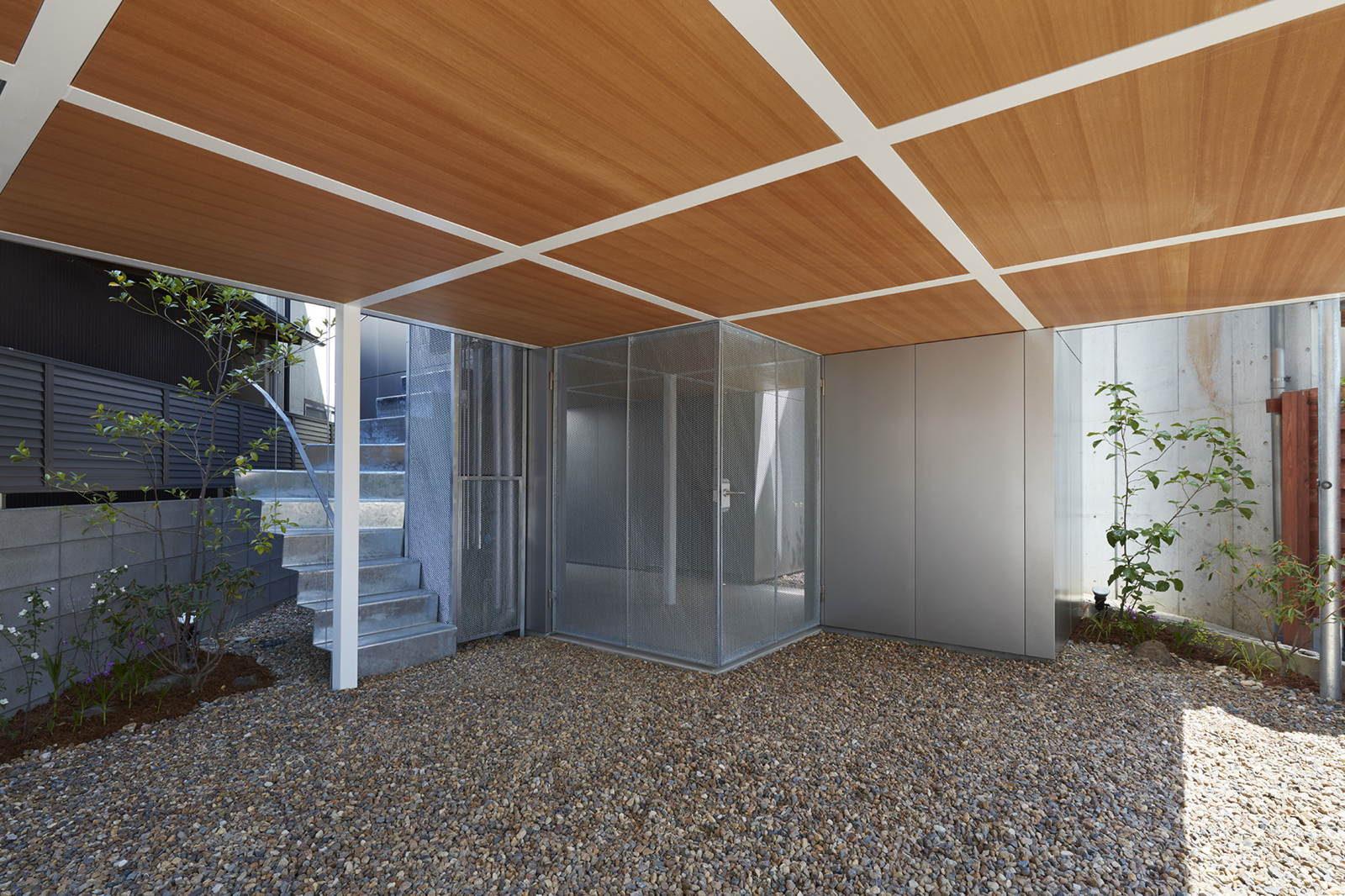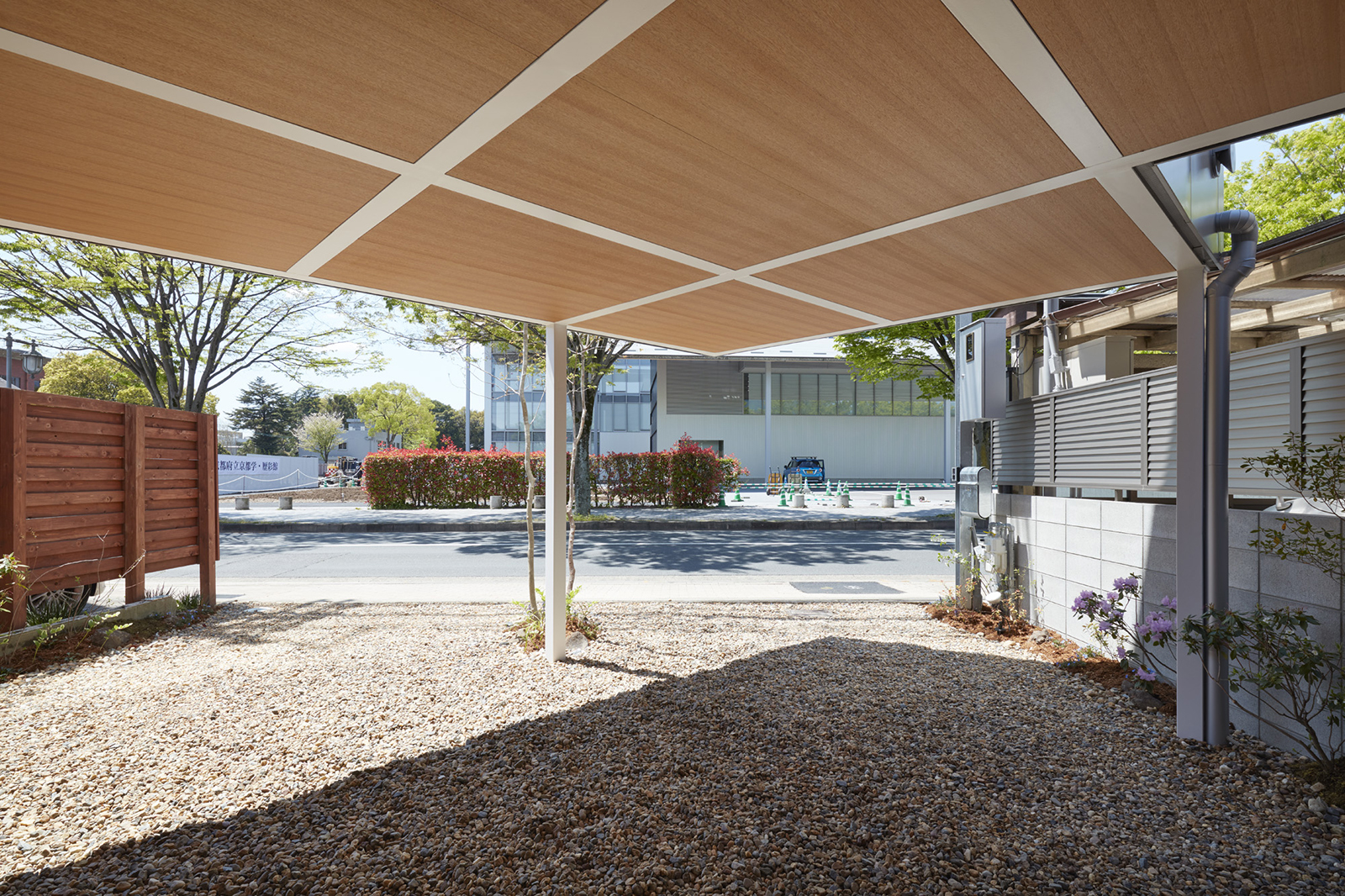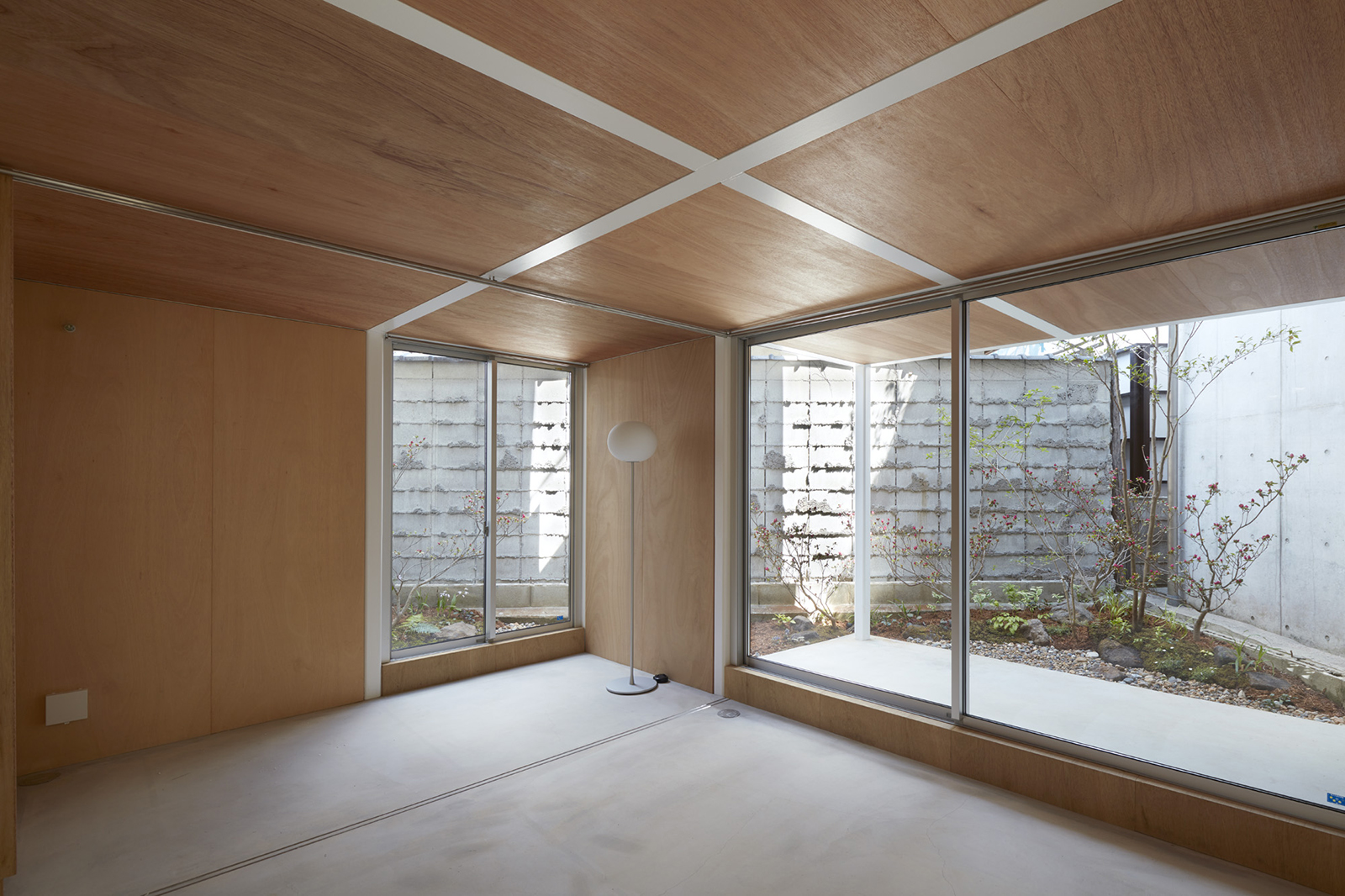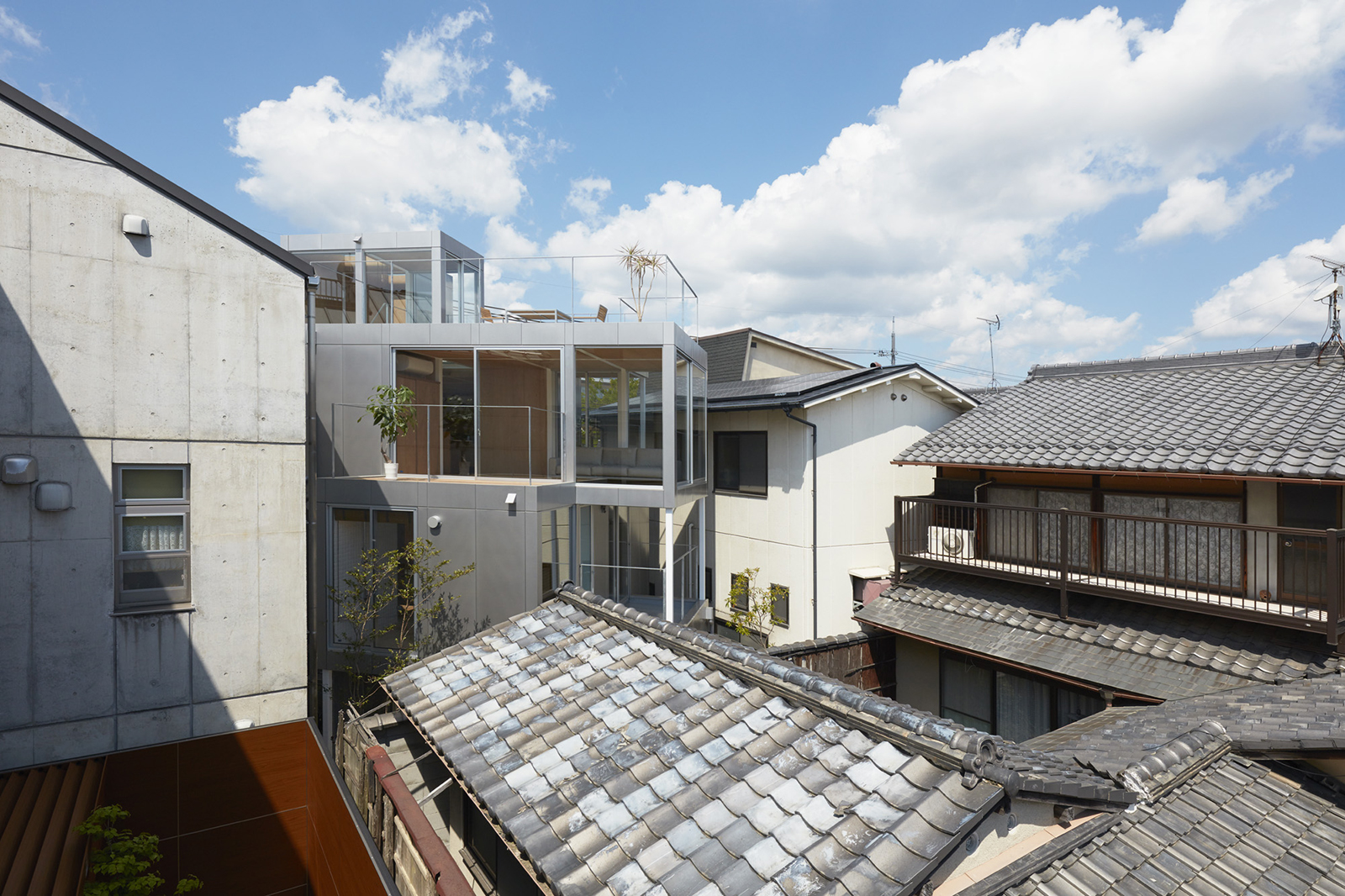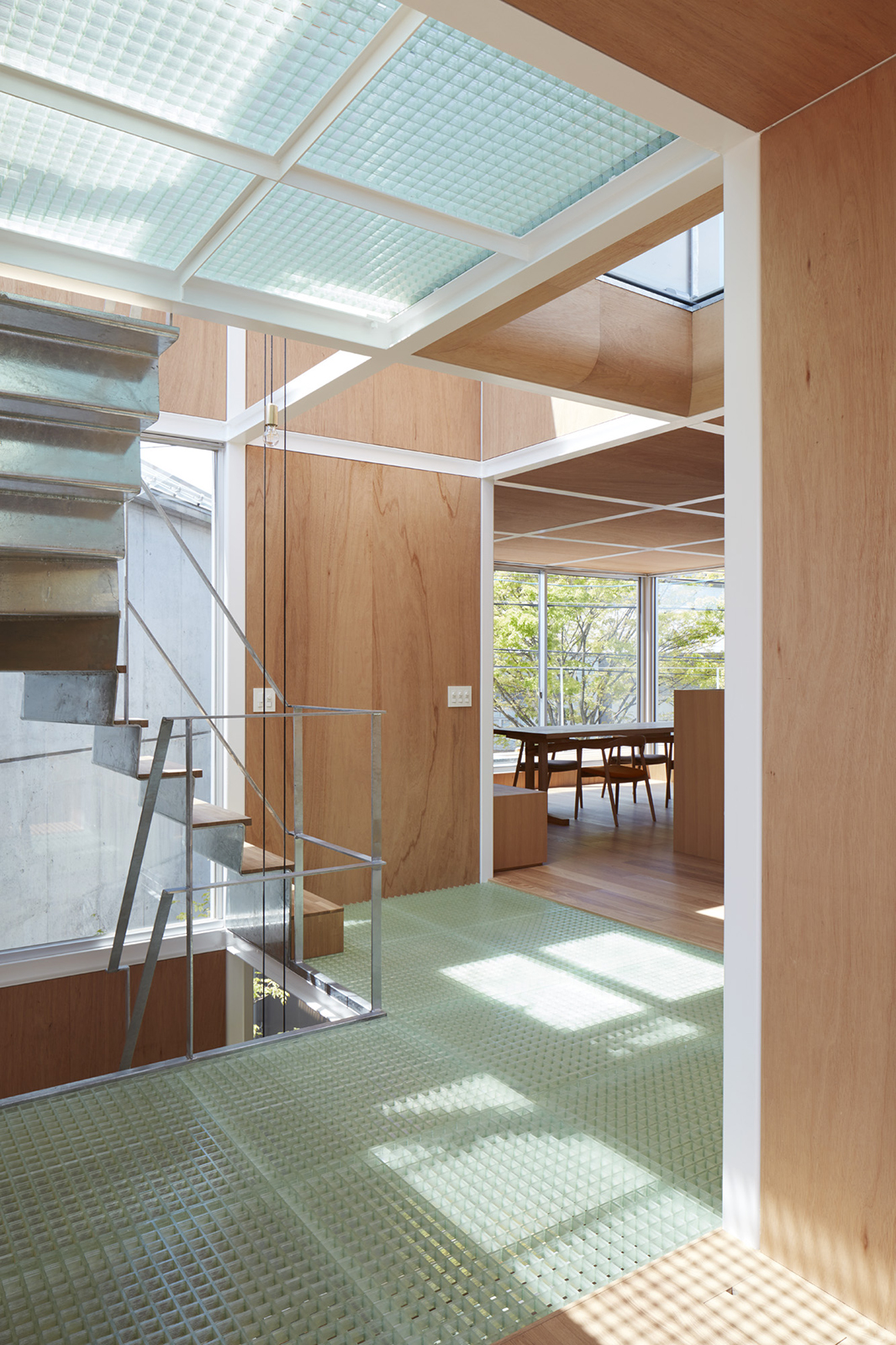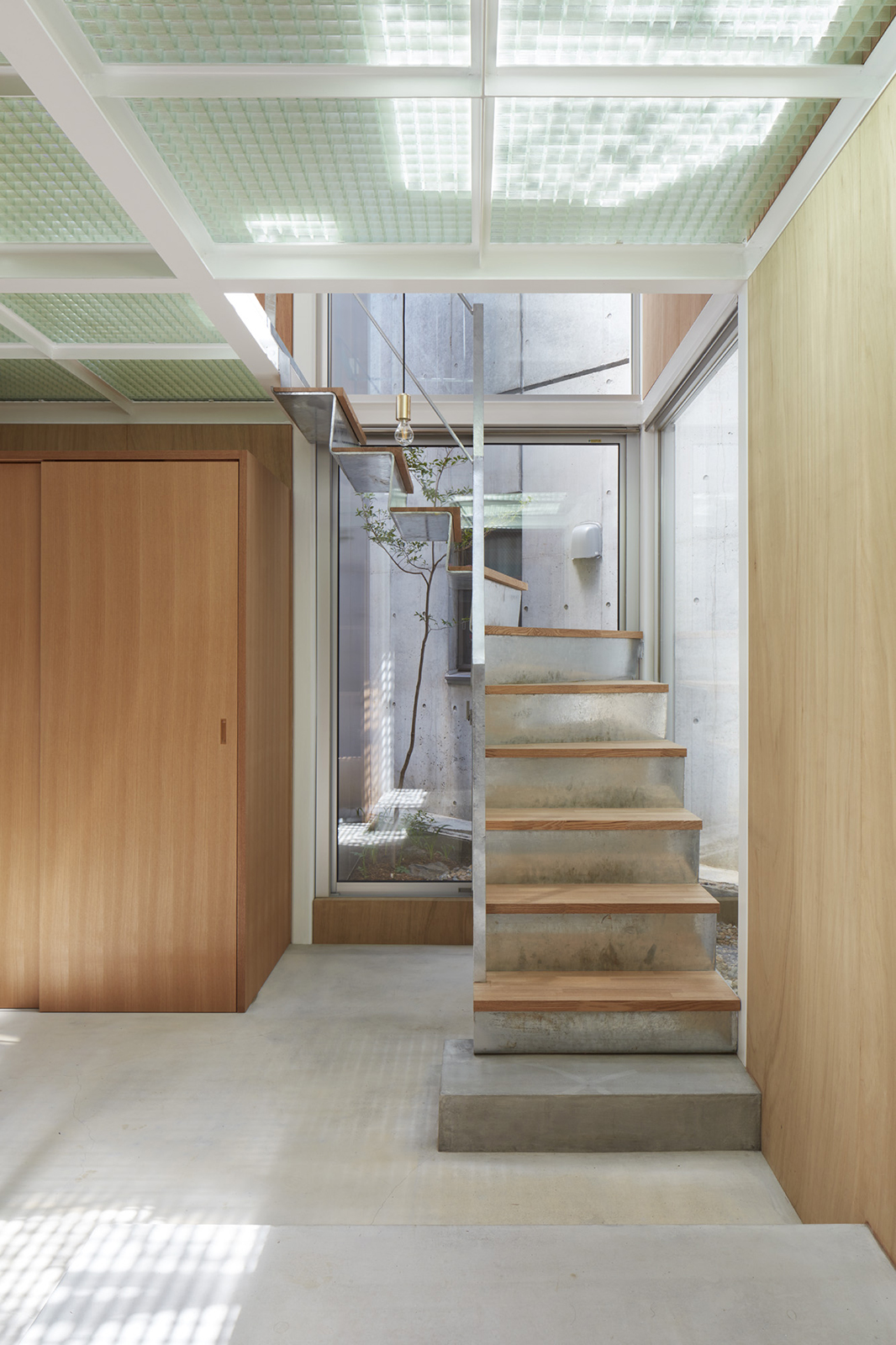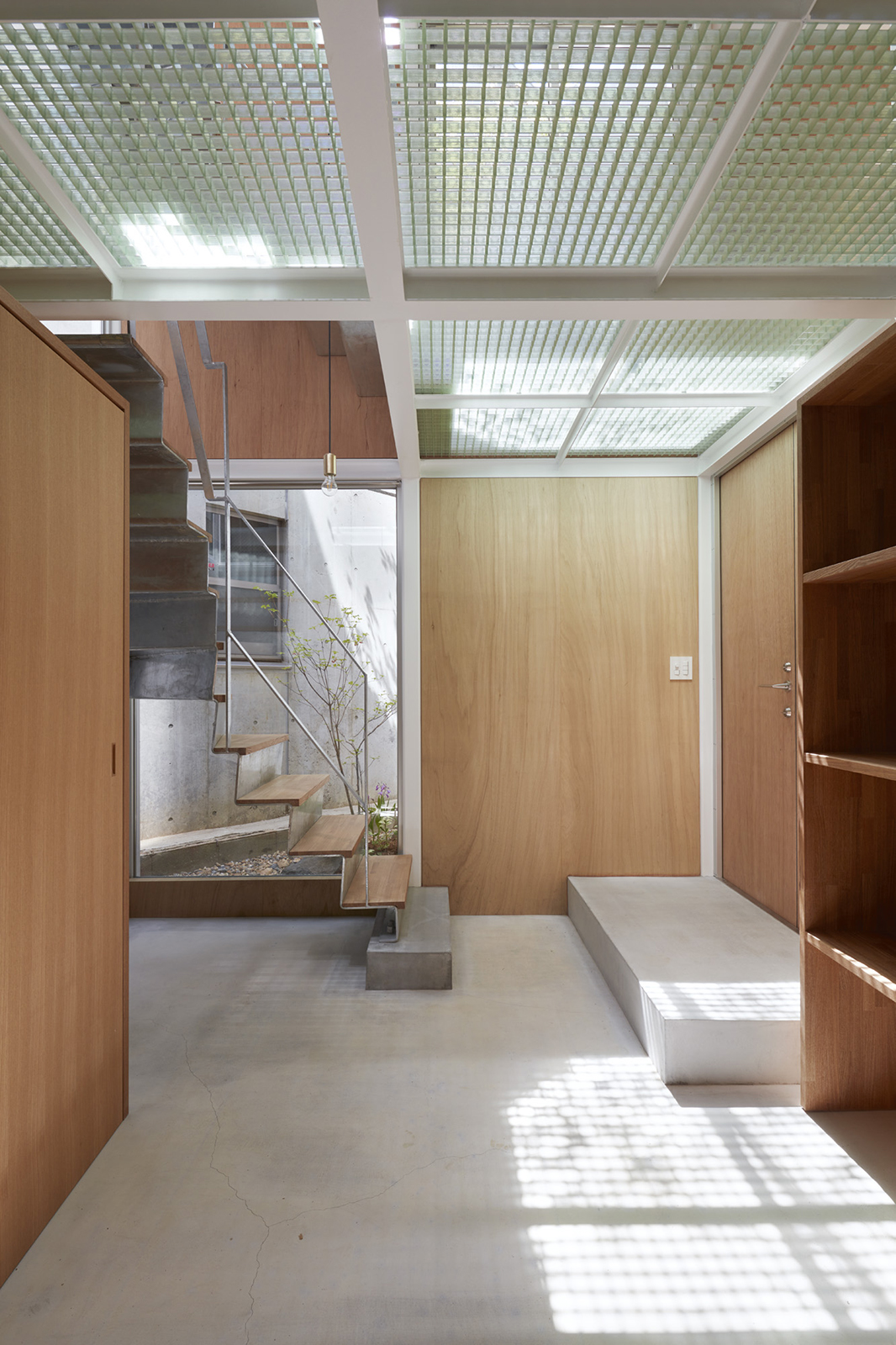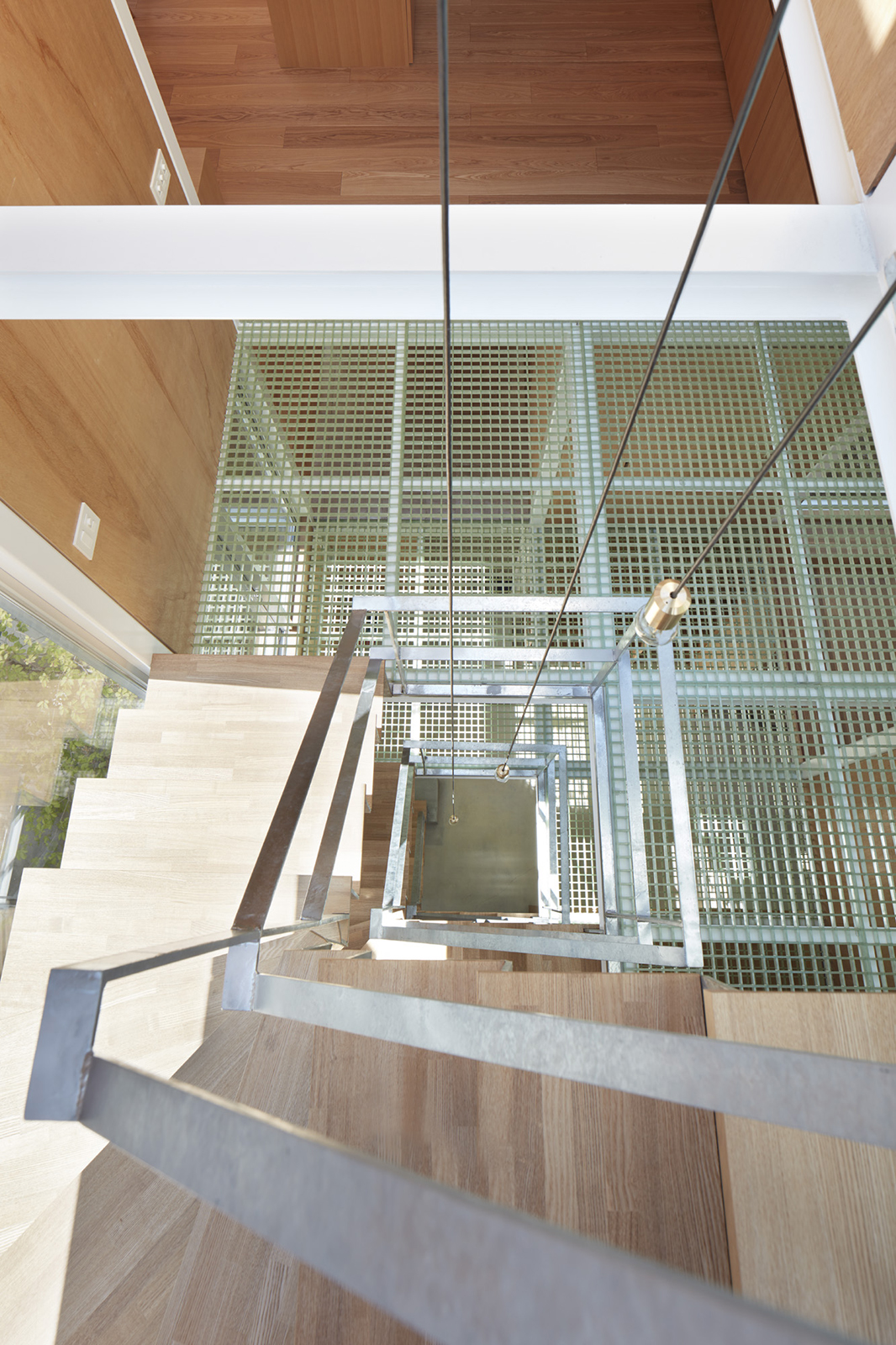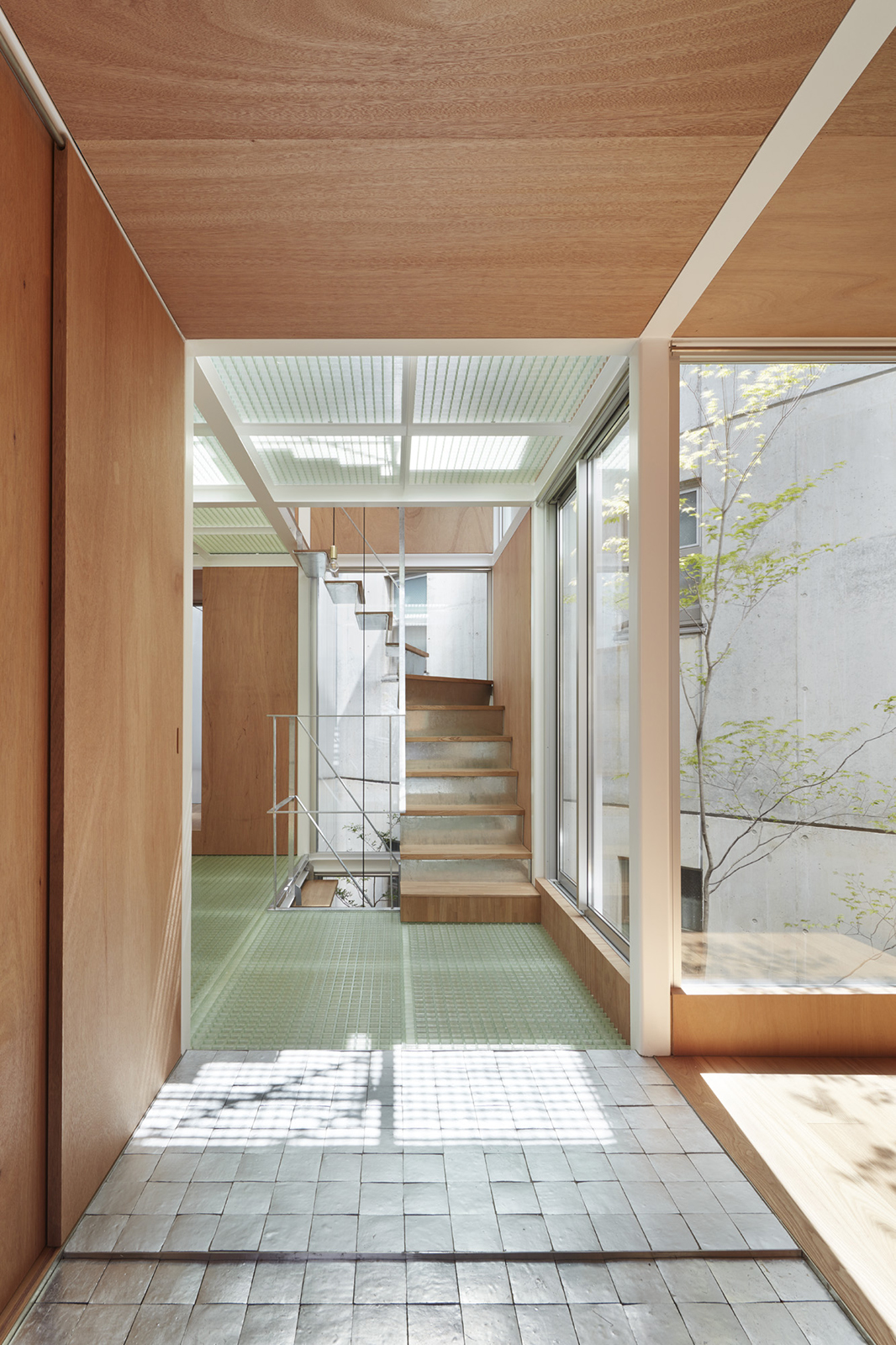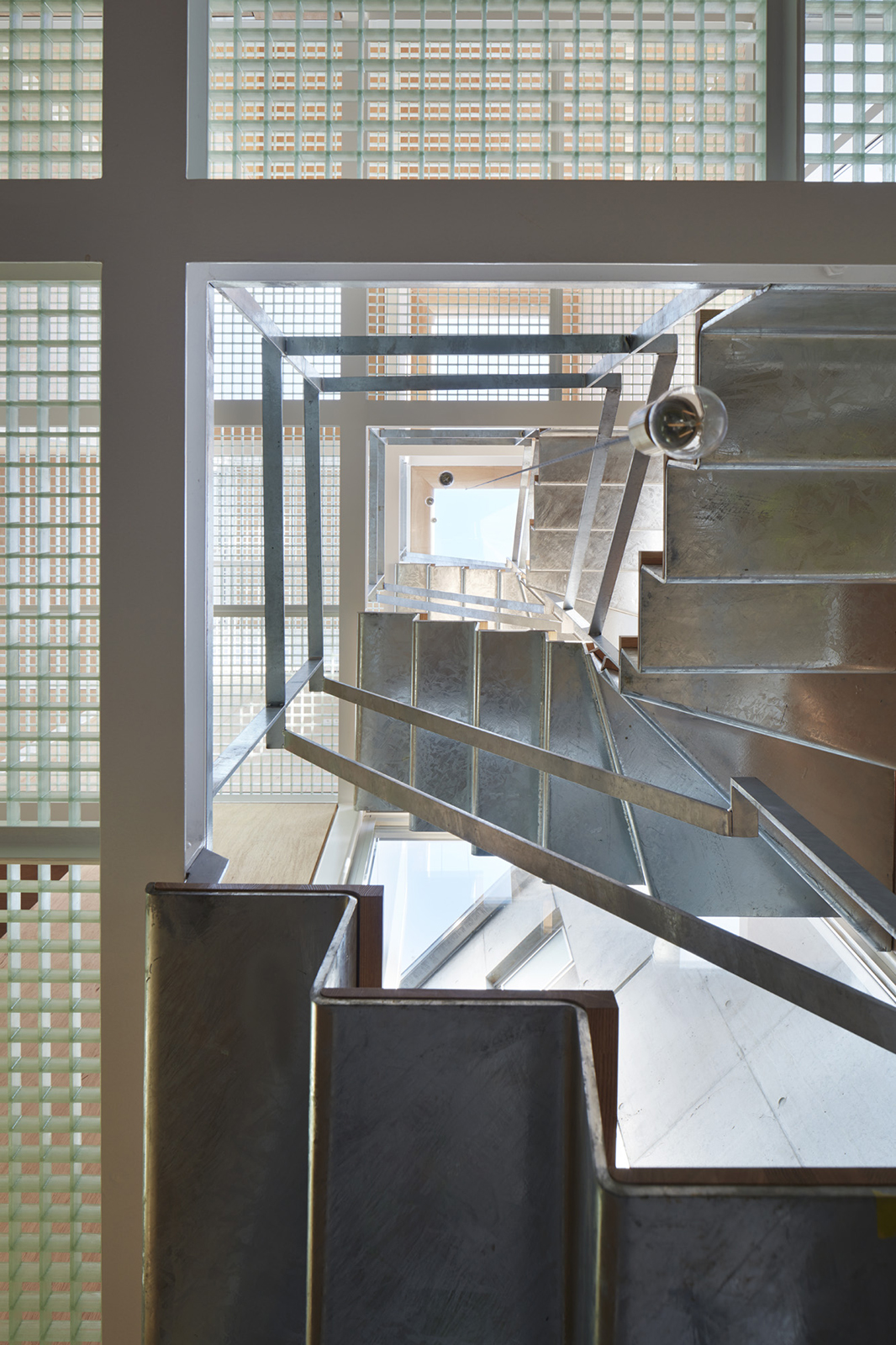作品
斜条坊の家
- 事務所併用住宅
設計、工事監理:畑友洋建築設計事務所
構造設計:萬田隆構造設計事務所
ファブリック:森山茜
造園:荻野寿也
グリッドシティに対するオルタナティブ
条坊性がスプロールする京都市郊外の建築。条坊による意味や歴史を持たない郊外において、強固な直行グリッドに支配された街区におけるオルタナティブとしての提案。
平安時代に現在の街並みの基礎が形成され、条坊制による東西軸・南北軸方向に広がるグリッドを基準に街区が整備されてきた。
条坊制は京都市郊外にも合理的な「地割」として引き継がれ、意味を失いながらスプロールした郊外を形成している。敷地は、北山通りに近く、 総合資料館やコンサートホールなど巨大な建築に隣接しながら、まさに合理的な地割としてスプロールした条坊によって構成された郊外の一角をなしている場所である。
そもそも小分けされた地割単位で、条坊グリッドに沿った計画を前提とし、建築面積をそれぞれの区画で確保した場合、隣棟間隔が狭く、街区として窮屈である。同時に隣家との正対を余儀なくされ、 互いに意味のある開口を設けることが困難である。よって必然的に表から奥に向かう一方向的な単調な空間の連なりになっている例が多く見受けられる。
ここで、条坊グリッドを45度傾けた斜条坊グリッドについて考察してみる。この新しいグリッドは、隣棟間に三角形の空地を生み、小面積でありながら奥行きを生むことができ、 連続する通り庭のような緩衝空間を生み出せることがわかる。同時に、隣家と開口が正対することを緩和できるため、少し気楽に開口を設けることができる。 構成は合理的な室形状が雁行する形式となり、街区の条坊から自由になりながらも、合理性を担保した多方向的な空間の関係性を可能とする形式となる。
私たちはこの地のように、強固な直行グリッドが支配する街区において、この建築が今後の街区における建築の建ち方に小さな可能性を開いてくれるのではないかと期待している。
The project is built in Kyoto's suburbs where the city's Jobo Grid System, where the blocks are divided into grids, have sprawled. It pro- poses an alternative approach of the city where the rigid Jobo Grid System to areas outside significance or history. holds no The basis of current- day townscapes took form in the Heian period, and blocks have been developed based on a the direction of east-west and north-south axes according to the Jobo Grid System. Even outside of the Kyoto city, the Jobo Grid System took over as a logical "distribution of land," losing significance as it formed the sprawling suburbs. The site of this project is a typical example of the suburban Kyoto. To begin with, assuming a plan that fol- lows the Jobo grid in subdivided geographical units, if we were to secure the building within each division, the gap between buildings becomes too narrow and the blocks cramped. At the same time, this forces the houses to directly face each other, making it difficult to establish significant openings. This inevitably created many houses in which the spatial layout is unidirectional and monotonous, continuing from the front of the building In this project, we consider a new that tilts the Jobo grid to the interior at a 45-degree angle. P only creates triangular This new vacant spaces in the gap between buildings, but is also able to generate depth while remaining small, as well as produce a buffered zone like a continuous passage-garden that runs from the front to the back of the house. At the same time, the plan alleviates the house from having to directly face the neighboring house on the opposite side of the street, making it easier to create the openings. The resulting design is a V-shaped configuration, a form which fosters logical, multidirectional space relationships while also being free from the Jobo grids.

